What is a VIN number?
What is a vehicle identification number?
A vehicle identification number (VIN) also known in Ireland as a chassis number, is a unique code, including a serial number, used by the automotive industry to identify individual vehicles as defined in ISO 3833. (International Organization for Standardization: the organization that promotes worldwide proprietary, industrial and commercial standards.)
The VIN number serves as the car's unique fingerprint and no two vehicles have the same VIN. VINs were first introduced in 1954 but from 1954 up until 1981, there was no accepted standard for the VIN and so different manufacturers used different formats.
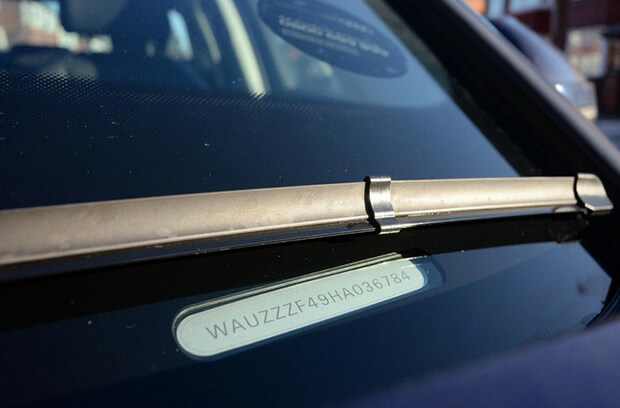
Then in 1981, the National Highway Traffic Safety Administration (NHTSA) in the United States standardized the format so that all codes were 17-characters (digits and capital letters) in length that act as a unique identifier for the vehicle. The VIN number specifically omits the letters I (i), O (o), and Q (q) so as to avoid confusion with the numerals 1 and 0. All vehicles and light truck model since 1981 or later has a unique 17-digit VIN in a fixed format.
The VIN number on a vehicle identifies the vehicle's unique features and specifications from the manufacturer. The VIN code will identify specific information about the vehicle's year, make, model, country of origin, assembly plant, and more. It can also be used to track registrations, warranty claims, recalls, thefts and insurance coverage. If the vehicle's VIN is less than 17 characters long, the VIN is most likely from a pre-1981 vehicle.
The reg history check service helps potential car owners use VINs to find vehicles that are defective or have been written off.
What do the numbers and letters in a VIN mean?
A Vehicle Identification Number, despite its name, is actually made up of 17 characters of both numbers and letters in any combination that a manufacturer decides upon. The first character in a VIN may be either a letter or number and tells where in the world the vehicle was manufactured. The VIN identifies were the car was actually made, which may be different from the manufacturers home country.
- A – H means Africa
- J – R (except O and Q) means Asia
- S – Z means Europe
- 1 – 5 means North America
- 6 or 7 means New Zealand or Australia
- 8 or 9 is for South America
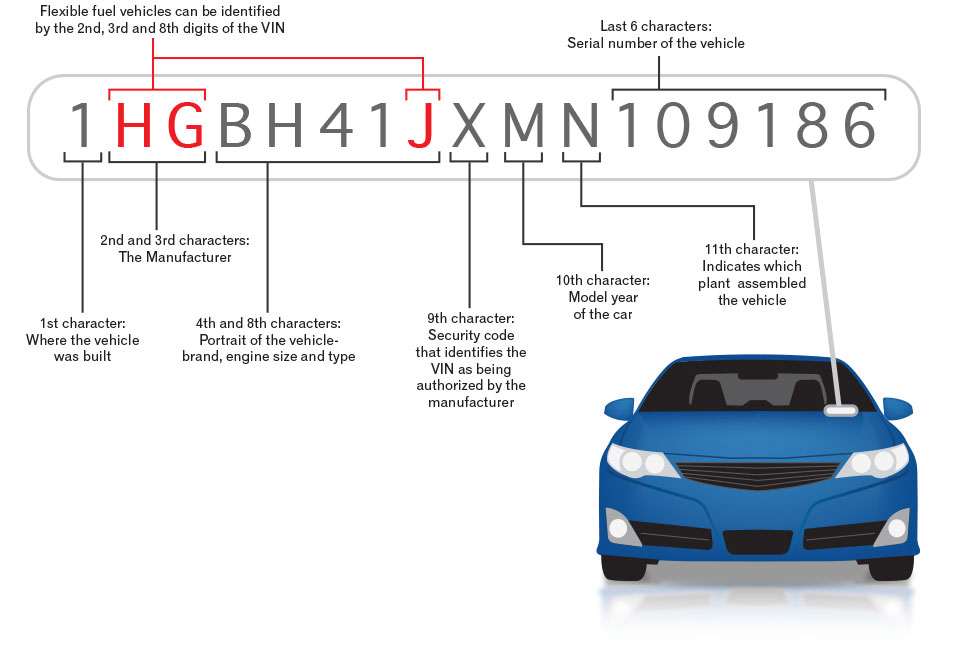
-
1st character in the VIN code indicates the country of origin or where the car was made. In some countries in Europe though, it may be the country where the manufacturer has its headquarters.
-
2nd character identifies the manufacturer
-
3rd character represents the vehicle’s type or manufacturing division. For example, in this VIN “1GNEK13ZX3R298984,” the “G” indicates a vehicle manufactured by General Motors.
-
The first three characters, which includes the country identifier digit is part of the World Manufacturer Identifier (WMI). However, if the manufacturer builds less than 500 vehicles per year 9 will be the third digit and 12, 13, 14th position (part of the production number) will make up the second part of the manufacturer's WMI.
-
The next five characters 4-9 make up what's called the Vehicle Descriptor Section (VDS). To break this section down further, characters 4-8 identify the vehicle’s model, body style, engine type, transmission etc. This section is often used by service mechanics to identify certain systems installed by the manufacturer so that the car can be properly serviced. The 9th character is a check character. This is used to detect invalid VIN’s based on a mathematical formula which was developed by the Department of Transportation in the United States.
-
10th character designates the model year of the car
-
11th character identifies the specific manufacturing plant in which the vehicle was built and each manufacturer will have their own numerical designation for this.
-
10-17 is referred to as the Vehicle Identifier Section (VIS). This last section also constitutes the vehicle serial number. This may indicate the sequence in which the vehicle came off the assembly line. Again, each manufacturer will have their own numerical designations.
12 character VIN number
In some older cars, such as antique cars, the VIN may be different than the current 17-character VIN and may only contain 12 characters. This is because there was no standard for the VIN numbers between 1954 and 1981 so different manufacturers used different formats.
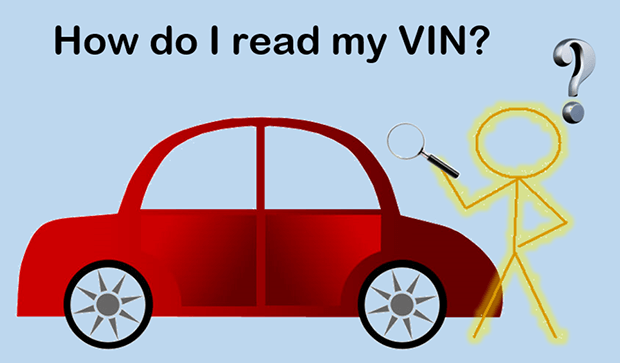
Vehicle Year - 10th position letter
| A | 1980 | L | 1990 | Y | 2000 | A | 2010 |
| B | 1981 | M | 1991 | 1 | 2001 | B | 2011 |
| C | 1982 | N | 1992 | 2 | 2002 | C | 2012 |
| D | 1983 | P | 1993 | 3 | 2003 | D | 2013 |
| E | 1984 | R | 1994 | 4 | 2004 | E | 2014 |
| F | 1985 | S | 1995 | 5 | 2005 | F | 2015 |
| G | 1986 | T | 1996 | 6 | 2006 | G | 2016 |
| H | 1987 | V | 1997 | 7 | 2007 | H | 2017 |
| J | 1988 | W | 1998 | 8 | 2008 | J | 2018 |
| K | 1989 | X | 1999 | 9 | 2009 | K | 2019 |
Locations of the VIN number
See the image below: 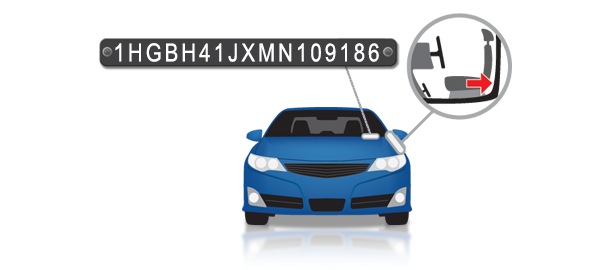
Look for the VIN in these locations:
- At the dashboard on the driver's side of the vehicle
- driver's side door at the door post
- Insurance card/Insurance policy
- Vehicle title and registration
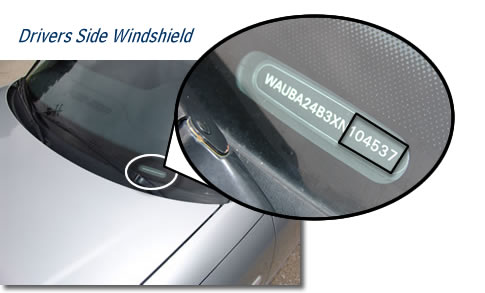
Before buying a car
Before buying a used car, it is quite important to check the VIN as thieves will often replace the VIN of a stolen car with the VIN of a similar vehicle that is already legally registered. Always purchase a reg check to give you peace of mind.
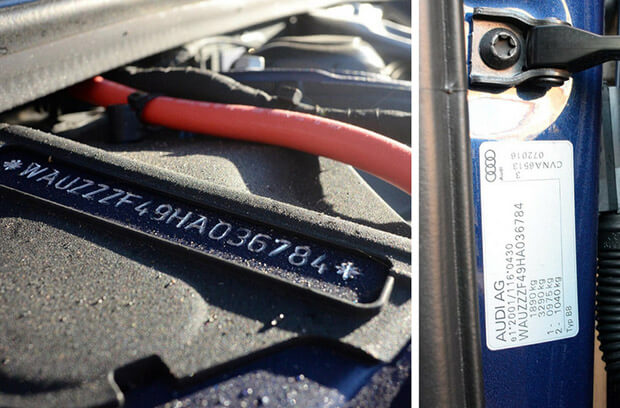
Author

Justin Kavanagh
Justin Kavanagh is a recognised leader
in automotive intelligence and vehicle
data supply to the entire motor industry.
He has almost 20 years experience in
building systems from the ground up.
As the Managing Director of Vehicle
Management System, he understands the
need and importance of trustworthy and
reliable vehicle history and advice to
both the trade and the public.
Follow me on LinkedIn
